August/September 2013
Travels with Consonants
We wander through eastern Germany, southern Poland and the Czech & Slovak Republics
Or, “What’s a nice couple like you doing in a place called Piwniczna-Zdroj?”
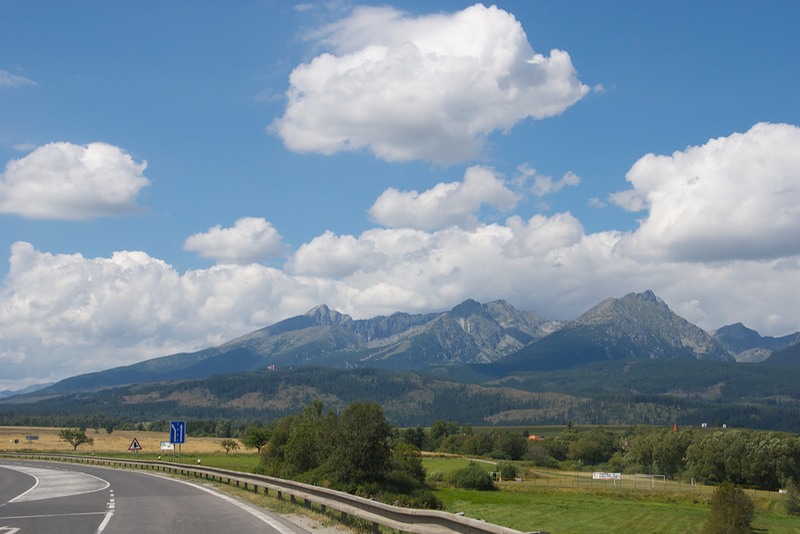
You might recall that our last adventures included Rick confronting a dead computer. Our search for a solution had us heading out of Romania and towards Berlin, where we knew we could get his Mac repaired. We quickly moved through Hungary and into Slovakia. These countries have very pretty areas; we could only promise ourselves to try and return later in the summer.
The plots of land that were being worked were larger than those in Romania, and sadly we saw no horse-drawn carts, nary a one. What we did see, however, starting in Hungary, were town names with a zillion letters, most of them consonants (and we knew it would only get worse as we went along). Also, in Hungary the money had lots of zeroes as we went from the Leu at about 3 to the US dollar to the Forint at 220 to the dollar.
We spent our first night parked near some Hungarian vineyards, in the Tokaj area of the Zemplén Hills. Tokaj is famous for its wines (Tokay to the Americans amongst us), and the hillsides were covered with ripening grapes. It is a very lovely area. The next morning we crossed into the Slovenská Republika (aka Slovakia), got some Euros from a local ATM, and kept on trucking.
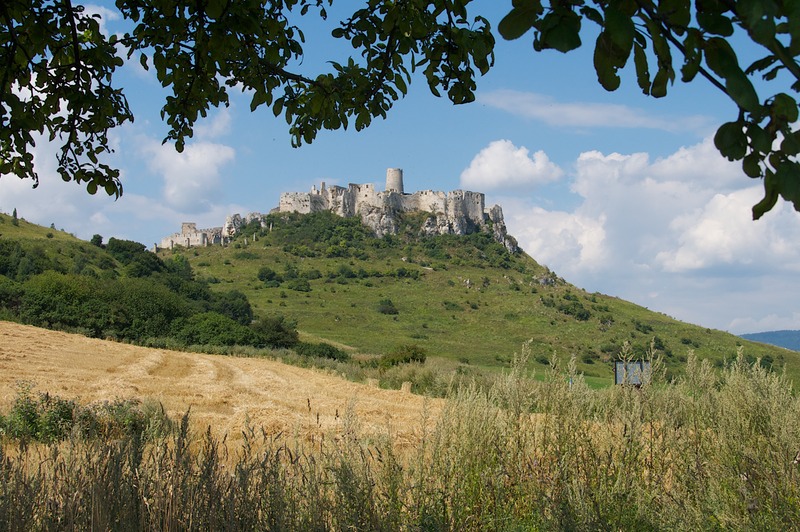
It was just as pretty on the Slovak side of the border and we immediately realized we had entered “Skoda-ville” – the cars, which are made in the neighboring Czech Republic, were everywhere. We made a quick stop in Košice to try and see the old town center. Unfortunately, we had nothing but paper money from the ATM, all the meters demanded coins, and we couldn’t find a place to pull up to buy a small something to get some coins. Hummmph. So we promised we’d come back to this elegant medieval city, and headed northwest into the Spiš region, along the southern edge of the Tatra Mountains. It was gorgeous and made for a pleasant day, although it was slow going because of the traffic in this popular resort area.
By nightfall we were almost to Cĕská Republika, but stopped in the very nice city of Želina where we enjoyed a quiet evening parked next to their Budatin castle. These countries do good castles, and they have plenty of them to share.
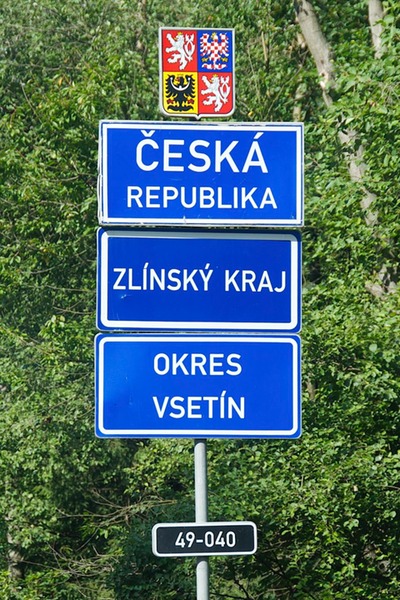
By the way, we find ourselves newly aware of an old problem: every country is identified differently by each of its neighbors and it can get quite confusing. It’s no big deal if you’re going to be in a country for several weeks, but when you’re moving fast you get lost in figuring out what the names mean. It’s a language thing of course and is true all over Europe, not just here. It would be much tidier (and easier on us) if they would all adopt the English language names like we’d like them to; but oh no, each country has its own name for itself and each of the other countries. Thus, our Czech Republic is also known as Republiki Czeska, Česká Republika, and Tschechische Republik; and that’s just near at hand, let alone what the French or Bulgarians might say. Similarly, Poland becomes variously Polen, Polska, Polsko, or Połsko. Is it any wonder we get lost all the time? Hopefully, if we slip up and mention that we’re enjoying our time in Słowacka, you’ll be able to follow along.
If we were going to get to Berlin by Wednesday, where we’d made appointments, we needed to make better time, so in the Czech Republic we went ahead and bought the necessary vignette and buzzed across country along the motorway, covering a lot of ground very quickly. We skirted the edges of Prague, doing our best Schwartzenegger imitation, “We’ll be baaack” – soon we hoped. We followed the Elbe River north towards Dresden, then opted to take a small country road across the border into Germany rather than use the motorway – we felt we hadn’t really seen any of the countryside at all. It was lovely, here on the southern side of the Bavarian mountains, with small towns and pretty resorts as we climbed higher and higher. We got permission to spend the night (a lovely, quiet one) in a parking lot next to a public building of some sort. We were all alone when we retired for the night, but at daybreak the lot was already filling with cars from people commuting back down the hills into Prague, some 50 miles away. Everybody wants to live in the ‘burbs.
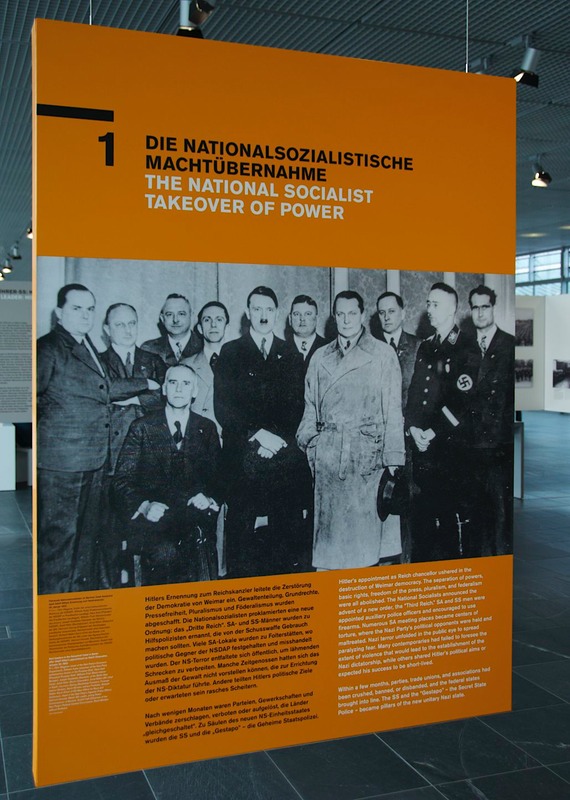
Soon we were on the autobahn, heading for Berlin. Long story short, we ended up with a new computer for Rick. We’ll spare you the gory details, except to insert that Rick has now mastered a German keyboard, all they had available -- for some odd reason. (For all you techies, it’s mostly the reversal of the Y and Z, and adding some letters with umlauts, but they also moved around most of the punctuation marks.) But much more fun, we had a really good time with friends from Hamburg, who happened to be in Berlin at the moment. We did some sightseeing, including finally getting to the Dali Museum (totally cool, she said), spending more time at the Topography of Terror exhibit, which documents the rise of the Nazis, and a lovely ride on the canals to see “the other side” of many of the city’s landmarks.
We also had a really interesting few days with old traveling buddies Yasha and Jürgen, who live north of Berlin, wandering through some of the older suburbs of the former East Berlin. The area is coming along, sometimes slowly; there are still many rather battered old homes and apartment buildings in evidence, at least one ancient windmill, and neighborhoods still pretty much un-redeveloped since the war. However, Germany has always been in the forefront of avant garde housing, and post-war Berlin has some very interesting examples to be enjoyed. We visited an apartment block that was quite fascinating, some 35 years after it was constructed. There is some really interesting use of space, particularly in the common areas, and the housing design was quite innovative. Some friends of Y&J had lived there for about 30 years; it was really cool.
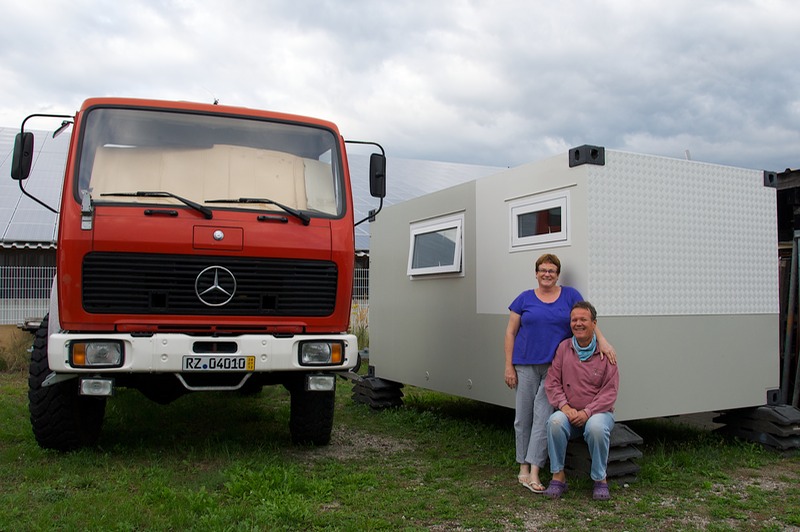
Our buddy Jürgen is working hard on building an overland vehicle for them to travel in (soon, they hope). He started with a converted fire engine and an ex-military rear box, and is rebuilding the box into posh living quarters. It’s a huge job, but he is making impressive strides. They hope to be back on the road by the end of the year… and we hope to be able to meet them somewhere along the way.
Jürgen took time out to go with the rest of us to a neat place called Classic Remise. It’s like an auto museum, but it’s not. It’s actually a place where they restore classic cars and also provide a place for folks to store their classic car. There are dealers there with cars on display as well as parts suppliers for classic car buffs. Yasha and I had fun, but the guys really got into it and were actively drooling by the end of the morning. You can go over to the Planes & Trains & Automobiles page on our website to see photos of Classic Remise.
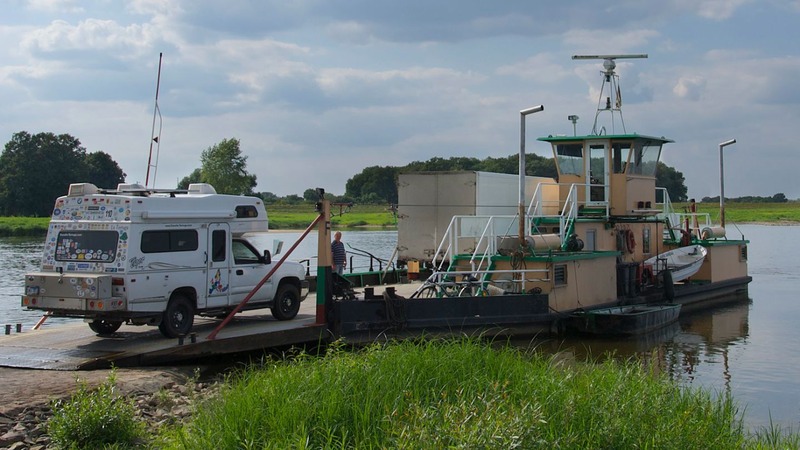
We hated to say good-by; it had been 4 years and as many continents since we had last seen them, down in Chile; but we finally took off into the hinterland of eastern Germany. We visited several medieval strongholds, including Havelberg and Tangermünde, both lovely spots. We got a good half-timbered houses fix, along with seeing some marvelous Gothic churches. Our staff weather person/barometer (Michelle Le Glum) kept predicting rain, but we had some good weather mixed in with the clouds and wetness. However, no matter how much we ignored the calendar, it became September, and we were definitely beginning to see signs of fall.
In the Naumburg area we poked around in several of the old villages of Thuringia. They’re quite delightful, with old stone buildings, their arches forming the entrances into courtyards with horses in stables and lots of work going on. It was a real step back in time, at least to before World War I. Lots of woody areas and small country roads. We had been told that our best bet on seeing some of “the old Germany” was to head into this area. It’s true; Thuringia is some of the best of eastern Germany. Next year we hope to come back and see more.
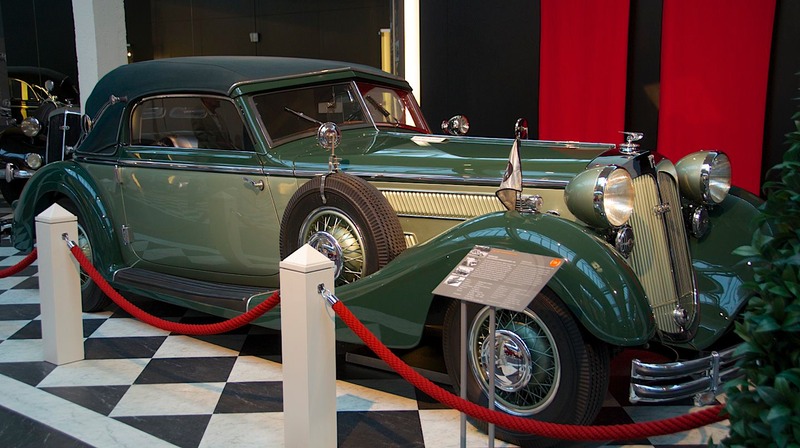
We stopped for a day in Zwickau, home of the August Horch Museum, and Rick once again disappeared for awhile. Zwickau was the Detroit of the former GDR and it has been a manufacturing point for automobiles since 1909. Beginning with Horch, on to the formation of Auto-Union, then the ubiquitous two-stroke Trabant during the cold war period, and on to a modern Volkswagen plant in the city today; this museum tells the story. It’ a nice place, and once again, you can see photos on our P&T&A page.
That night and the next day Michelle had her way and we got rain, and it was now getting colder at night; time to head further south.We moved on to Dresden, and had a terrific visit. Boy is that a great city! Dresden has pretty much rebuilt itself since Allied bombers razed it to the ground in a single night in 1945. And it has been recreated very well. It’s not all pristine like some cities; instead it looks weather beaten and well used, still showing many empty blocks where rebuilding has not yet occurred. It’s a lovely city and a super place to wander around. A real delight.
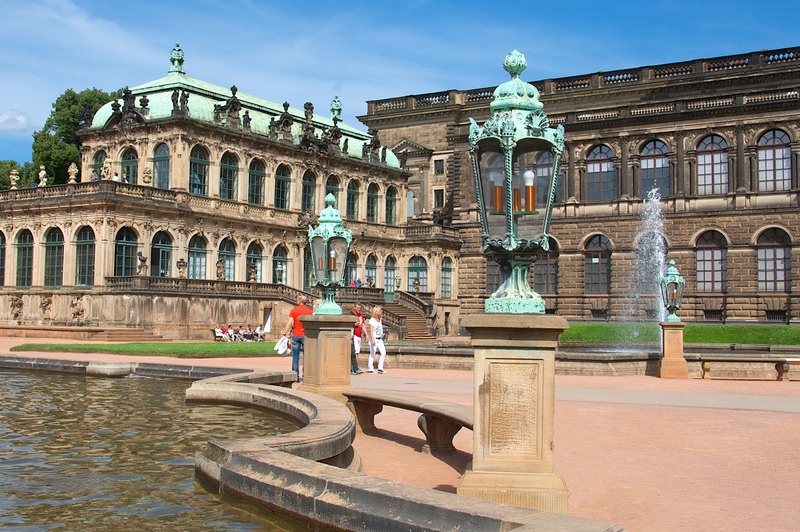
We ended our stay in Germany for this year by stopping in Görlitz, just on the Polish border. So much “on the border” that the river that runs through the city is the border. The Polish side is called Zgorzelec. Görlitz is pretty special.The city has maintained its historic core almost completely untouched by time, and down the side streets, away from the lovely plazas you find un-restored buildings and you get a really good look at what old Germany was like. Parts of the Kate Winslet, Ralph Fiennes film The Reader were shot here. Definitely on a par with Thuringia. We puttered around for parts of three different days, and never ran out of pleasures.
But soon it was time to cross into Poland. We’d really enjoyed what we’d seen of the former GDR (by the way, to the rest of the world it is the DDR; see the discussion above). There are still rural areas and the pace is a bit slower than in the west. Germany has made amazing strides in rebuilding since reunification, but there is still a noticeable difference between East and West. Many large industries had either relocated already or have never recovered from the war and Soviet neglect, and there is still considerable unemployment, with all that entails. However, we’d been told it was an interesting area to visit, and we weren’t disappointed. We shall return.
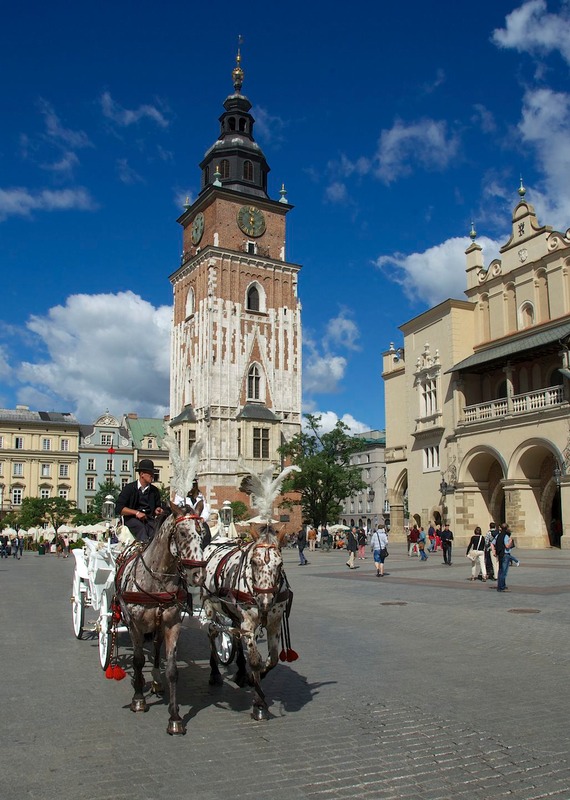
And then Poland. We were on our way to Auschwitz and Krakow (several of you suggested Wroclaw, but the word arrived too late). Our route took us through Silesia, a pretty, rural area with pastures and forests, but a densely populated area as well, with one village usually running right into the next. We enjoyed it very much. Nothing much to be seen, but filled with small and lonely roads that were really great. And our visits to Krakow and Auschwitz Krakow is a tremendous treat – a terrific city to spend time in; very, very pretty around the main plaza and choc-a-bloc full of lovely carriages pulled by extraordinarily beautiful big horses. We had a ball, poking around the old buildings and climbing up to the castle and visiting the Jewish quarter. My maiden name is Popper, and one side of my family is Jewish. I was able to locate the Poppera Synagogue (most likely no relation – Popper was a very common name – but it was significant to me nevertheless).
Another highlight for me was climbing into the belfry of the cathedral at the castle. You go up these tiny, narrow wooden steps, past several huge bells hanging by straps from enormous wooden beams; you could reach out and touch them. They were solidly immobile to your hand; it must take tremendous force to get them to move. I think bell ringers must have had amazing muscles! For the most part we didn’t think too much of our castle experience. Not our cup of tea; too many tour groups and lots of separate admissions to be paid to see various parts.
Krakow is a city you could come back to over and over. After all is said and done, we think we liked Krakow as well as or better than Prague, so you know it really has some nifty areas to explore. It was also significantly less crowded and less affected by the whole tourist thing; just a nice place to visit.
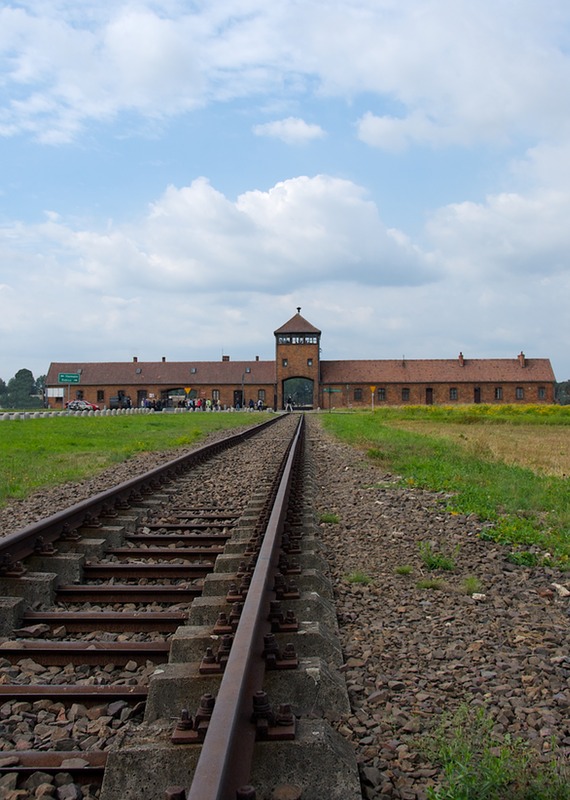
Auschwitz is… Auschwitz. It’s horrific, and detailed, and gives you chills. If you’ve not been, it’s actually two separate spots. Auschwitz itself is the concentration camp that was first used to house Polish undesirables and then expanded upon exponentially to house and kill undesirables (don’t you just hate that word?) sent there from all over Europe. The brick blockhouses remain and are used for two kinds of exhibitions. The first is a large group of buildings that has been given over to other European countries to use to discuss the treatment of their people during the war. The block on Poland was particularly informative and the one from the Netherlands was wonderfully done and ever so evocative. The remaining blocks are devoted to specific topics; an especially gripping building contains enormous piles of items taken from prisoners upon arrival: shoes, eyeglasses, suitcases, shaving equipment, for example. The entire site is a museum.
Birkenau is a couple of miles away. It was built, in 1941, to house Soviet POWs; most of whom died the first winter. The space was then adapted to carry out Hitler’s “Final Solution.” The railway arrival platform is still there, at the end of the long tracks the railroad cars arrived on. Most detainees arrived, disembarked, and went straight to the gas chambers (the remains of two chambers are still on the site). It’s a shattering experience just to stand there and look around.
Birkenau is quiet, as opposed to Auschwitz, which is filled with tour groups and much commotion. As you arrive by walking down the tracks to the platform area, visitors tend to become silent. There’s not much to do except look at some barracks that have been preserved, and visit some memorials…and stand and look at those tracks. There was a group of Israeli teenagers there when we were at the site; they had lit candles, and several of them spoke to their group, before walking quietly away.
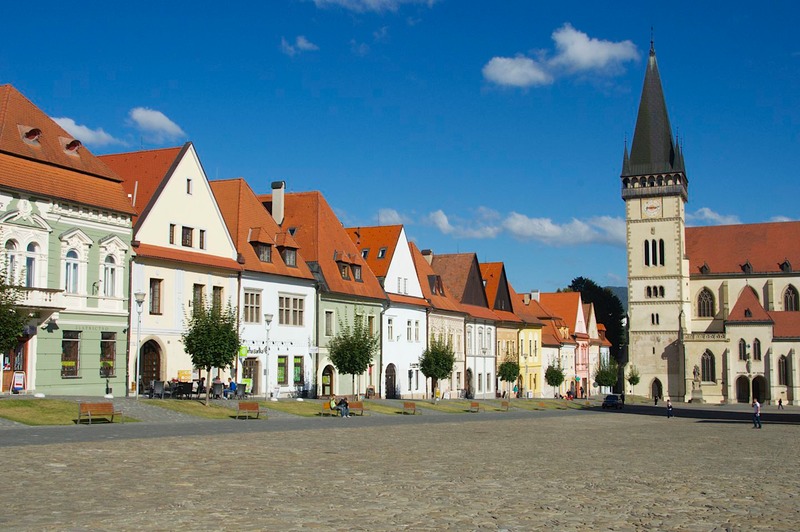
So – that was Poland for us. Our visits were very worthwhile, we were glad we’d come, and knew we’d missed a lot by needing to move on. Another time. We dropped down south of Krakow along the Poprad River south of Nowy Saçz, through a lovely valley. The noisy cities of southern Poland dropped away and we were back in the countryside, climbing up into the mountains and the border with Slovakia.
We were happy to return to the Slovak Republic. It’s so very pretty, with enough interesting spots to keep you happy as you drive along. We skipped Bratislava, the capital (just as we hadn’t visited Warsaw or Budapest) but we enjoyed the lovely medieval towns of Bardejov and Levoča, as well as ancient wooden churches and castles galore. One night we ended up parking beside an old, old church, arriving just at the end of a wedding. Horse and carriage were drawn up, waiting for the bride and groom to be off; daddies were dealing with restless little ones while their mommies were enjoying every moment of the ceremony. The bells rang for the new couple as the afternoon light was beginning to fade; we felt part of it all.
It was fun, and we got to listen to the gorgeous church bells during the evening and again the next morning. We like to listen to the bells for their lovely sound, but reminded ourselves that back in earlier times they often rang as the sound of approaching danger, telling folks to hurry and come to the protection of the church; living history for sure.
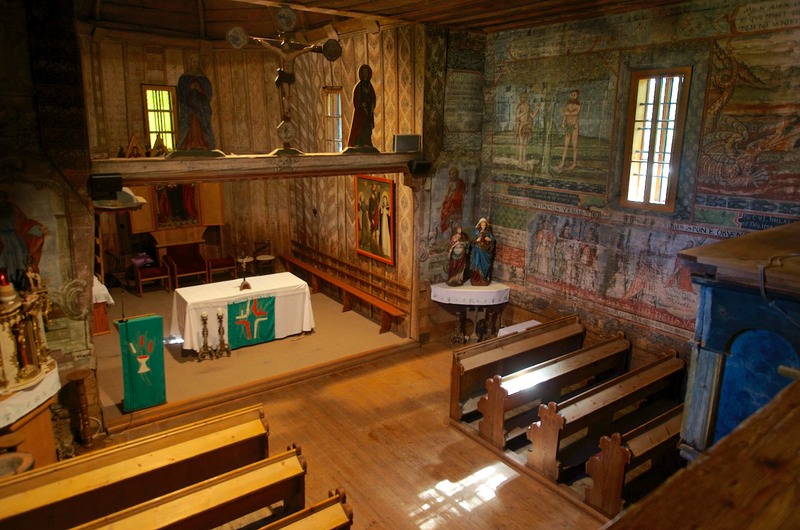
For quite awhile we followed the Poprad River up its eponymous valley, awfully pretty. (Popper probably means “from Poprad” or something similar, so I thought this was pretty special). We spent one night parked alongside the stream. We wandered along a nice mountain road through the Lower Tatra forests as we moved toward the Czech Republic. At 2400 feet there were more and more tinges of fall color. There were lots of Roma along the road, selling currents and mushrooms. Most fields had been harvested, but people were still in the fields digging up the potatoes; and hay bales sat beside the roads, all decorated for harvest celebrations.
Aiming toward Cĕská (that’s a test question) we detoured to visit the strange and interesting little village of Cičmany. A couple of hundred years back the inhabitants decided to paint strange symbols on the walls of their homes. Still doing it. It’s turned into a cottage industry and tourist destination. It was raining when we arrived, so we ducked out for a few pictures and then moved on. Dark brown houses, symbols applied in white paint. Look a lot like tic-tac-toe. Well, okay!
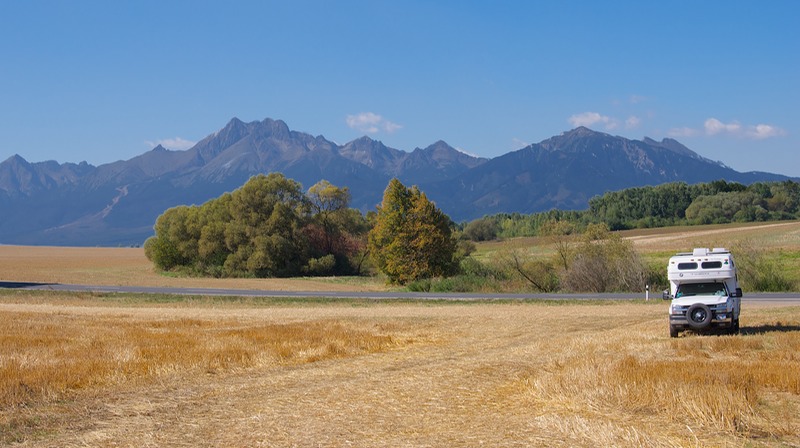
It was foggy and rainy at the top of the pass that is the border crossing into the Czech Republic, and the rain increased as we started down the other side. On this, our return visit, we’d decided not to buy a vignette, so all our plans included how to get from one spot to the next by way of the “old roads.”
We soon found out that the motorways would have been more efficient, as we found the Czech Republic has fewer good alternative routes than we’d found in other countries. As with Pennsylvania, due to the terrain it’s mostly okay if you’re going north-south, but we (naturally) weren’t. We’d entered the country in the east, and had a route that would take us in a big circle, with Prague at the northwest end, and then coming round back toward the southeast, where we would drop down into Austria north of Vienna. Got all that? No test, I promise.
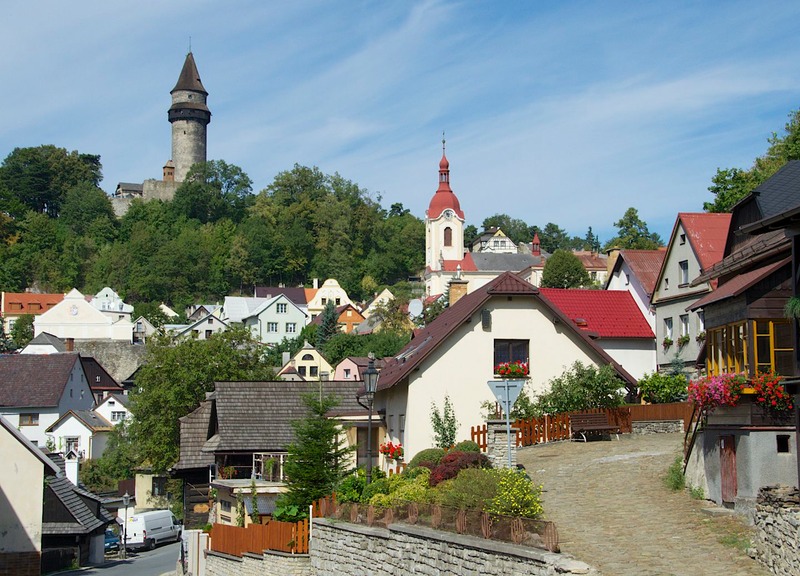
It all turned into a bit of a slog. We did a lot of what we’d intended, but by the end we were worn out. Personally, I liked Slovakia better. But we did see some really interesting towns, and the countryside is as lovely as any we’ve seen in years.
Despite the driving problems, we had a good time. We visited Olomouc, the elegant old Moravian capital (and spent a quiet night at their city cemetery), and then on to Brno. Rick wished we’d been here in July, for the Moto Grand Prix (motorcycles), but I just wanted to have a chance to go to the Museum of Romany Culture. Glad I did, too. It was very homespun, but earnest, with several good displays and information on the history of the Roma people (who came from India about a thousand years ago), clothing displays and old photographs, etc. The Roma population was decimated by Hitler (an equal opportunity murderer), but is growing somewhat today. The most chilling exhibit was a display of facial types and characteristics as established by the Nazis; all very scientific, the data were used to identify people to be murdered. Red is the color of the Roma people, and the entire museum was redolent with it; I had quite an experience there.
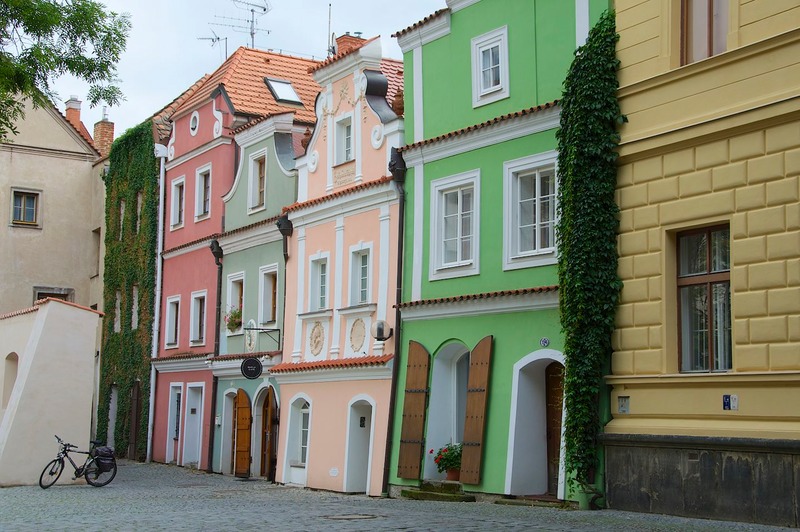
Probably out favorite city was Pardubice; it was an absolute gem. For once Lonely Planet had steered us in the right direction. (We tend to disbelieve most of their hype.) Pardubice’s old center is a combination of Renaissance and Art Nouveau, and amazingly interesting. We wandered around getting our fill. We are seeing more and more Art Nouveau buildings as we work our way toward Prague, where we know there will be tons. We are real fans of both Art Deco and Art Nouveau art and architecture, so we were jazzed.
Neither of the countries that made up the former Czechoslovakia suffered a lot of bombing damage during World War II, and as a result many of the old cities have lovely ancient centers that are a real pleasure to visit. And then there are the castles, in the zillions. And the fortresses. As we worked our way up through the rolling hills and forests of eastern Bohemia we saw plenty of them, along with large fields of corn, potatoes and seed crops – the hay is already in; we saw it in the farm villages as we passed through. Oh, and suddenly sunflowers again.
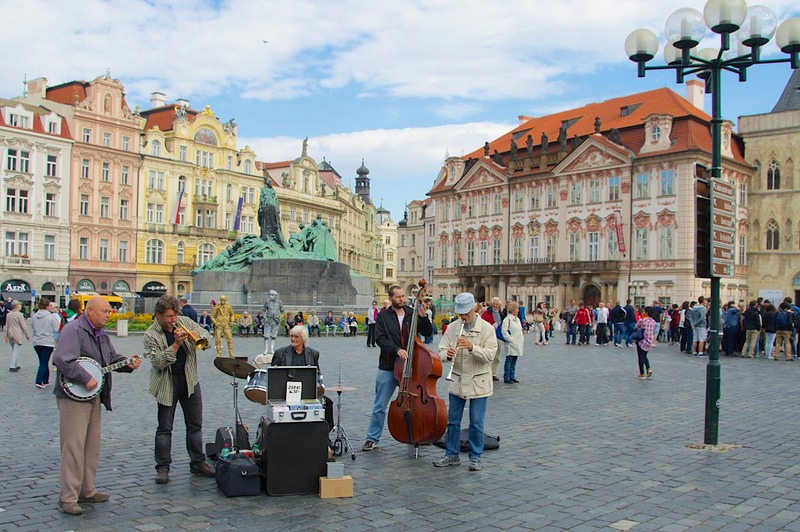
And then… Prague. And it was good. We’d been concerned about where to stay and how to make this city work for us, but it all went just fine. We spent two days there. Rick went to the National Technological Museum one afternoon, after dropping me off near the Jewish Museum area. It was perfect for both of us. The Jewish Museum is a complex of buildings in the old Jewish section of Prague; there is a lot to learn here, along with artifacts and synagogues and an enormous cemetery. One of the synagogues (the Pinkas) is bare except for the over 80,000 names that have been inscribed on the walls – the names of those who were taken. My cousin said she’d been told there were over 400 names of Poppers on the wall. I didn’t count them, but it was a very moving moment to see all the names.
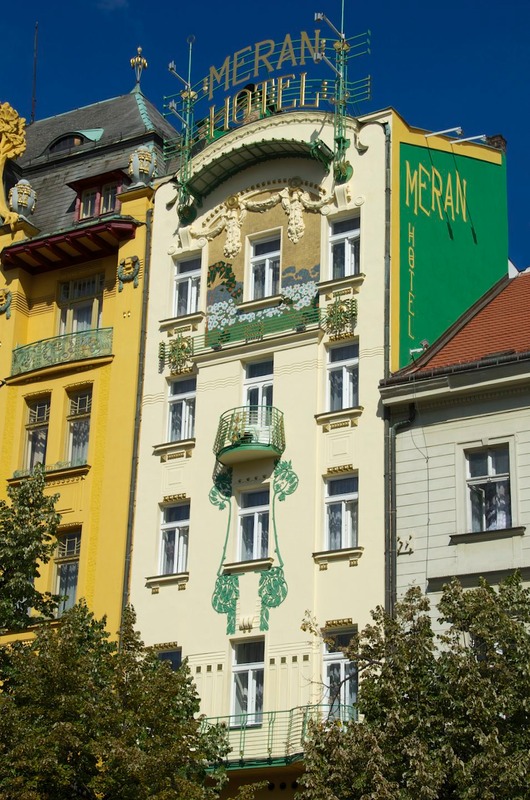
Rick had a more cheerful, but equally rewarding time of it at the National Technical Museum across the river, which is a combination of many things. The transportation section includes some of just about everything with wheels, including planes and trains and automobiles, but also motorcycles and bicycles. Not great, but not bad either and the group included a fairly ratty but very significant Mercedes-Benz W154 which had been driven many times by three-time European Champion Rudolf Caracciola, including a win in the last pre-war German Grand Prix at the Nurburgring in 1939. Other than that, there was an outstanding exhibit of astronomical instruments through the centuries as well as rooms on the history of Architecture, Television and Photography. All in all a nice museum experience.
The next day we walked the old center – walked and walked and walked, visiting churches and looking at all the architecture, so much of it Art Nouveau. We ended the day at the Alfons Mucha Museum, which we both thoroughly enjoyed. He is considered to be one of the fathers of Art Nouveau and the museum is excellent; there are lots of his posters and paintings (think Sarah Bernhardt) and a good film to watch. Heavenly. We then visited the Municipal House, designed by Mucha down to the doorknobs and elevator cages. It was exquisite.We had a lovely day. We had been a bit concerned about the size of the tourist population we would encounter, but it wasn’t too bad. They were certainly there in large numbers, but as we have seen so often before, the herd sticks pretty close to the major sites and just a block or two off the main drag we often had the place to ourselves.
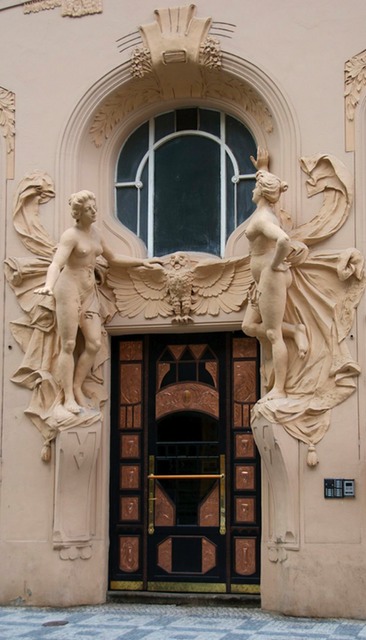
We spent a few more days in the area, poking around. It’s an easy country to like. But we were worn out. The roads were beating us down, and then we got ripped off by an enterprising fellow who led us to believe we could park in his lot for the night for a reasonable fee – which turned out to be something quite different the next day when we were ready to leave. We decided we’d had enough.
Enough of the Czech Republic; enough of central Europe actually, where the countries are gorgeous but just a bit unwelcoming for the motorhome traveler. Finding places to stay the night is more difficult than in other areas, the whole vignette thing restricts our route choices and our internet access is limited. In a play on the old expression, Rick thought that the area looked like a nice place to live but he didn’t want to travel there. So we never completed our loop, never made a tour of eastern Austria (and never ducked back into Hungary to see a couple of places I’d wanted to visit that were just across the Danube from Vienna – which we also missed). Instead of going southeast, we went due west – into Germany – where we settled for a few days of sanity and rest in an approved motorhome parking area before heading south to Italy. Once recuperated, we dropped down through Austria (wow – what a gorgeous country that is!) into the Italian dolomites.
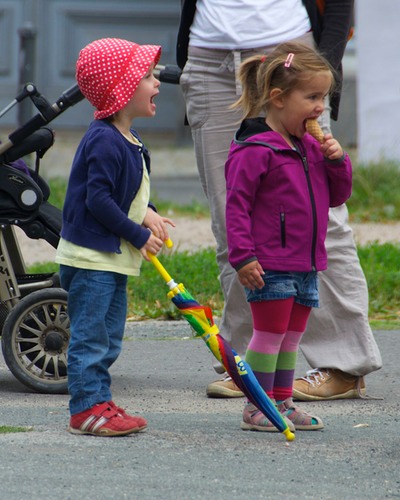
Venice is next on our list, followed by whatever Italian whimsy strikes us. We will leave the Tiger outside Rome this winter. Tiger has her own history of winter homes – Lisbon, England, Greece and now Rome. We fly out on November 8, with a return ticket for early March.
It’s been a swell late summer – we’ve explored parts of six different countries since leaving Romania in mid-August. That’s more ground covered in less time than we would like. But there’s not too much we’ve missed, and…there’s always next year.
See ya ‘round the corner.
Hugs from Rick and his harem – the ever-lovely Kathy; Michelle Le Glum; Ms. Emily, GPS; and La Tortuga the Tiger, taking us wherever we want to go and keeping us warm at night.
Click to see more photos from Germany or Poland
Click to see more photos of the Czech or Slovak Republics